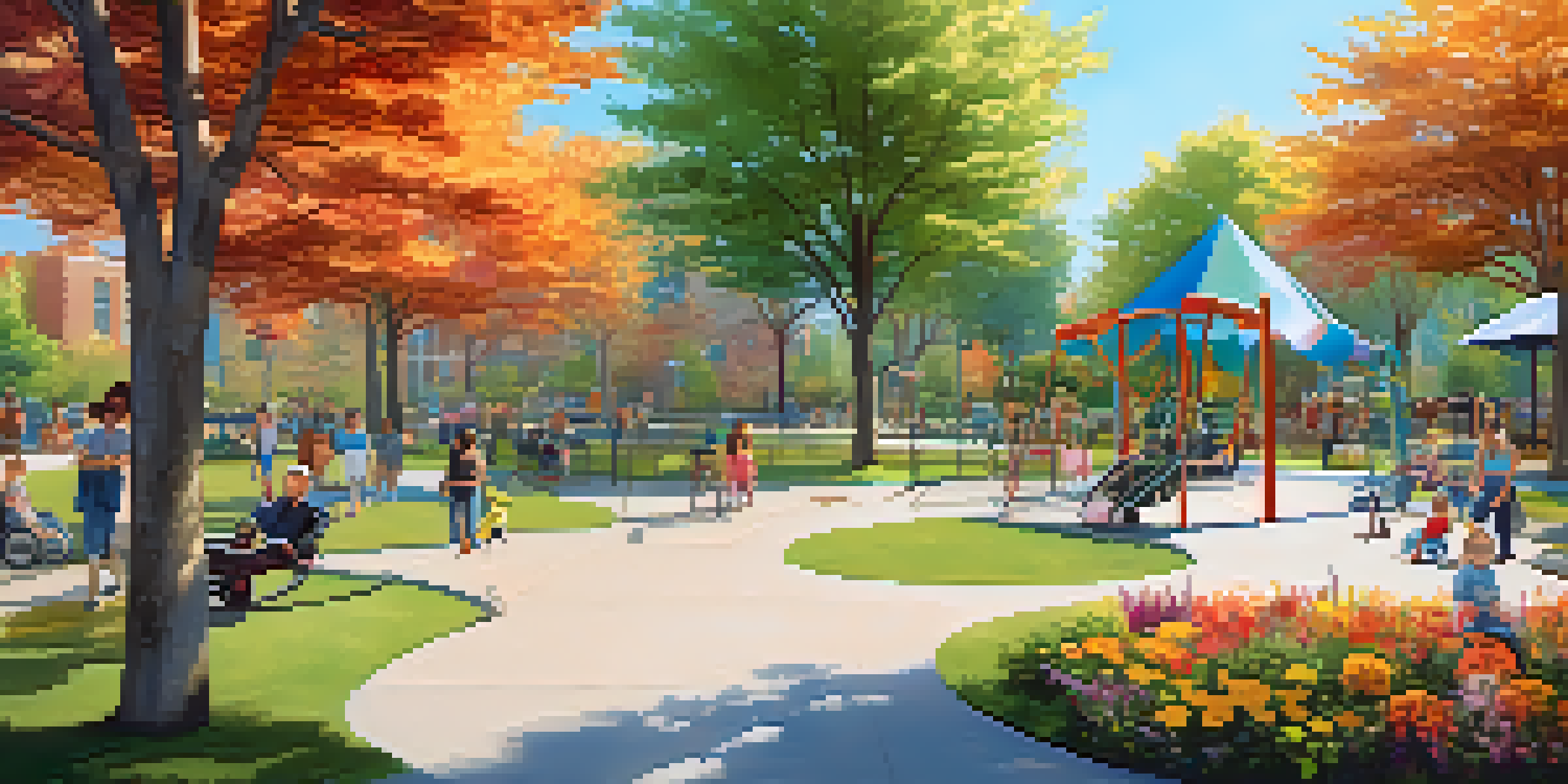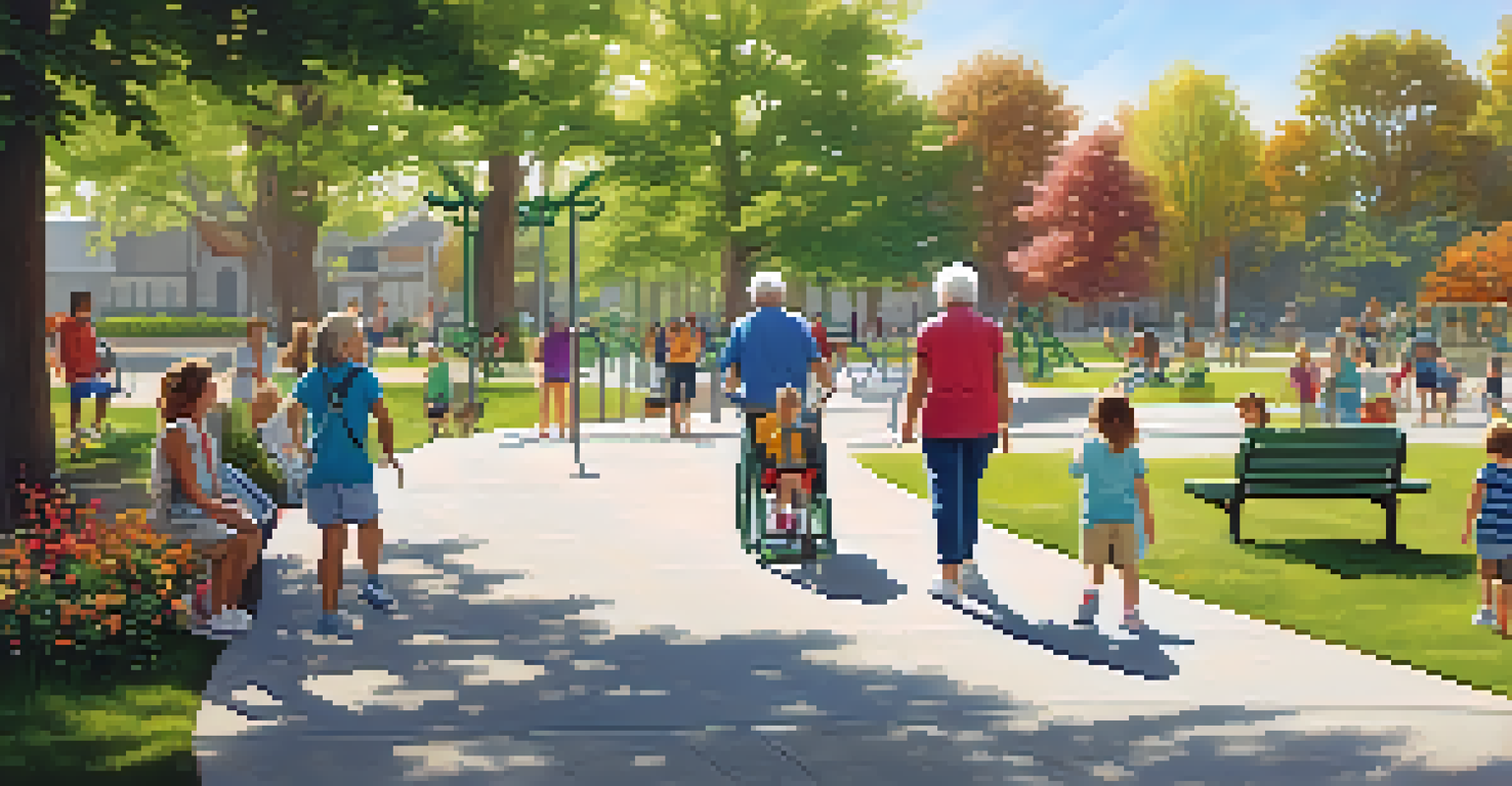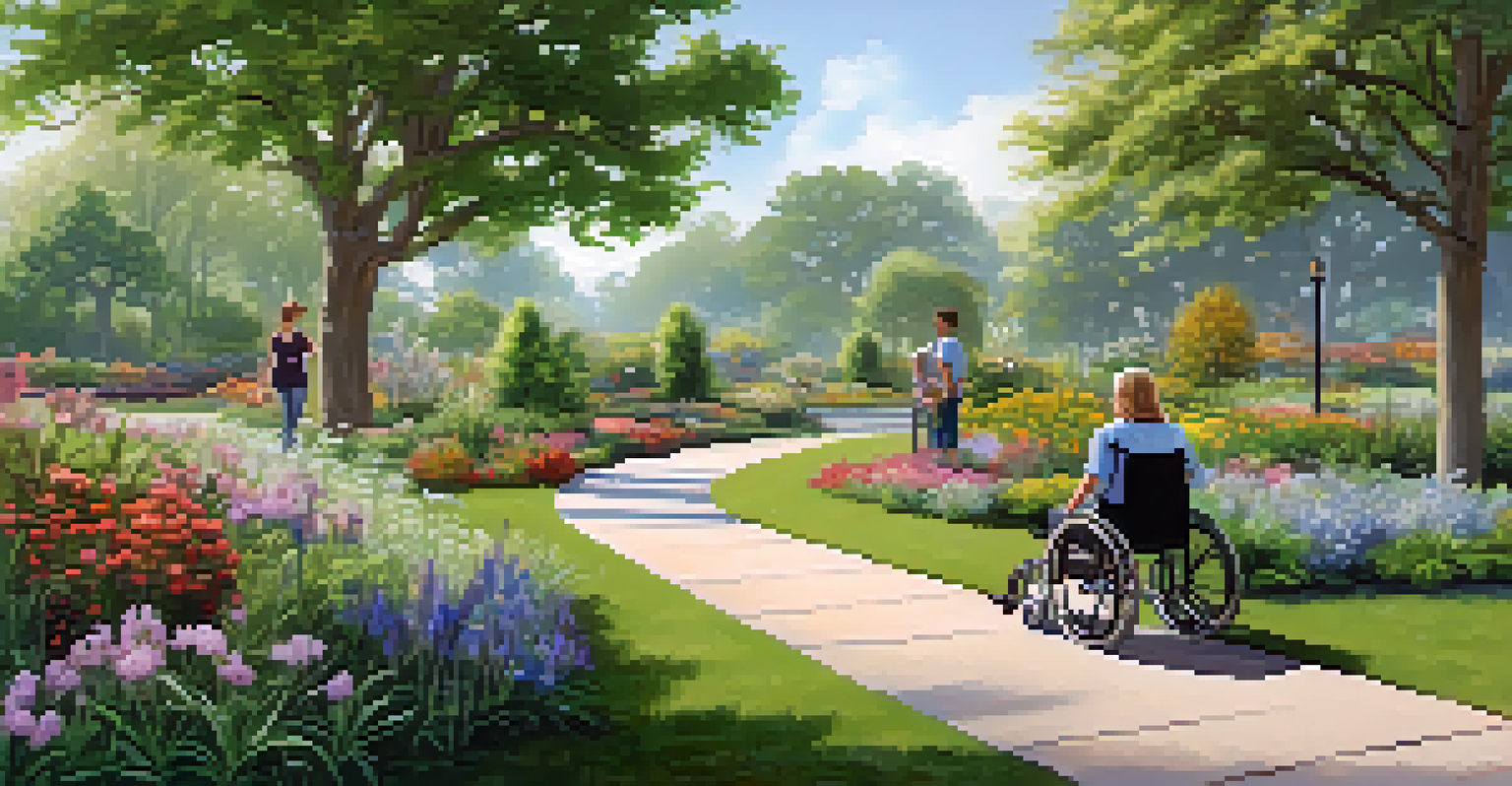Designing Accessible Parks for All: A Community Approach

Understanding Accessibility in Park Design
Accessibility in park design means creating spaces that everyone can enjoy, regardless of their physical abilities. This includes features like wheelchair ramps, sensory-friendly areas, and clear signage. By prioritizing accessibility, parks become welcoming environments that encourage social interaction and physical activity for all community members.
Inclusion is not a matter of political correctness. It is the key to growth.
Imagine a park where a child in a wheelchair can play alongside their peers without barriers. This vision can become a reality when we consider different needs during the planning stages. Accessibility isn't just about compliance with regulations; it's about fostering inclusion and ensuring no one feels left out.
When parks are accessible, they benefit the entire community, not just those with disabilities. Families, seniors, and even pet owners appreciate features that create ease of movement and enjoyment. Ultimately, accessibility enhances the park experience for everyone.
Engaging the Community in Design Decisions
Community involvement is crucial in designing accessible parks. Engaging local residents helps gather insights about their specific needs and preferences. Hosting workshops or surveys can empower community members to share their ideas, ensuring the park reflects their vision.

For example, consider a neighborhood where families express a need for a sensory garden. By incorporating such feedback, planners can create a space that not only serves individuals with sensory sensitivities but also offers a peaceful retreat for all. This collaborative approach builds a sense of ownership and pride among residents.
Accessibility Benefits Everyone
Designing parks with accessibility in mind creates welcoming spaces that enhance enjoyment for the entire community.
Moreover, involving the community in the design process fosters relationships and encourages more people to use the park once it's completed. When residents feel their voices have been heard, they're more likely to advocate for and protect their shared spaces.
Incorporating Universal Design Principles
Universal design principles ensure that parks are usable by everyone, regardless of age or ability. These principles focus on creating environments that are flexible, simple, and intuitive. For instance, paths should be wide enough for wheelchairs and strollers, and seating should accommodate various needs.
Accessibility allows us to tap into everyone's potential.
Think of universal design as creating a park where everyone can find joy in the same activities. A playground with adaptive swings allows children of all abilities to play together, promoting inclusivity and friendship. Such thoughtful design can transform a park into a hub of community engagement.
Implementing universal design not only enhances accessibility but also elevates the overall experience of the park. When features are easy to navigate and enjoy, it encourages more frequent visits and helps foster a stronger community spirit.
The Role of Nature in Accessible Parks
Nature plays a pivotal role in enhancing mental and physical well-being. Accessible parks should integrate natural elements like trees, gardens, and water features. These elements not only beautify the space but also provide therapeutic benefits for all visitors, including those with disabilities.
Imagine a park with a winding path through a fragrant herb garden, where anyone can stop to smell the flowers. Such features invite exploration and connection to nature, which can be particularly soothing for individuals with anxiety or sensory sensitivities. This connection to the environment enhances the park experience for everyone.
Community Involvement is Key
Engaging local residents in the design process ensures parks reflect their needs and fosters a sense of ownership.
Incorporating nature also encourages diverse wildlife, creating an ecosystem that can be enjoyed by all. Accessible birdwatching stations or educational signage about local flora and fauna can enrich the experience, making parks not just places for recreation but also for learning and appreciation of the natural world.
Safety and Security in Accessible Parks
Safety is a top priority in designing accessible parks. Ensuring well-lit pathways, visible signage, and clear sightlines helps all users feel secure and at ease. Additionally, incorporating features like emergency call buttons can provide peace of mind, especially for those who may need assistance.
Consider how a well-designed park can prevent accidents and promote safe interactions. For example, using non-slip surfaces on walkways can minimize the risk of falls, benefiting everyone, especially older adults. A safe park encourages families to visit, knowing their children can play freely.
Community input is invaluable in identifying safety concerns. By discussing issues like traffic patterns or secluded areas, planners can create an environment that feels safe for everyone. Ultimately, a secure park invites more visitors and fosters a sense of community belonging.
Creating Multi-Generational Spaces
Designing parks that cater to multiple generations enhances community engagement. Spaces should include features for children, adults, and seniors alike, encouraging families to spend time together. For instance, incorporating fitness stations alongside playgrounds promotes activity for all age groups.
Picture a park where grandparents can enjoy a leisurely walk while their grandchildren play nearby. This setup fosters family bonding and intergenerational connections. When parks cater to diverse age groups, they become vibrant social hubs, strengthening community ties.
Nature Enhances Park Experience
Integrating natural elements in parks promotes mental well-being and encourages exploration for all visitors.
Additionally, including quiet areas with benches or picnic spots allows for relaxation and socialization among older adults. These thoughtfully designed spaces ensure everyone, regardless of age, can find a place to enjoy the park comfortably.
Maintaining Accessible Parks for Longevity
Creating accessible parks is just the beginning; ongoing maintenance is essential for ensuring their longevity. Regular checks on pathways, equipment, and landscaping keep the park safe and enjoyable for all users. Communities should prioritize funding and volunteer efforts to maintain these vital spaces.
Imagine a park where the playground equipment is consistently in good shape, and the pathways are clear of debris. Such upkeep not only preserves accessibility but also enhances the overall park experience. Regular maintenance shows the community that their park is valued and cared for.

Moreover, involving community members in maintenance efforts can foster a sense of pride and responsibility. Organizing clean-up days or volunteer events can encourage residents to take an active role in preserving their accessible parks, ensuring they remain vibrant and inviting for years to come.